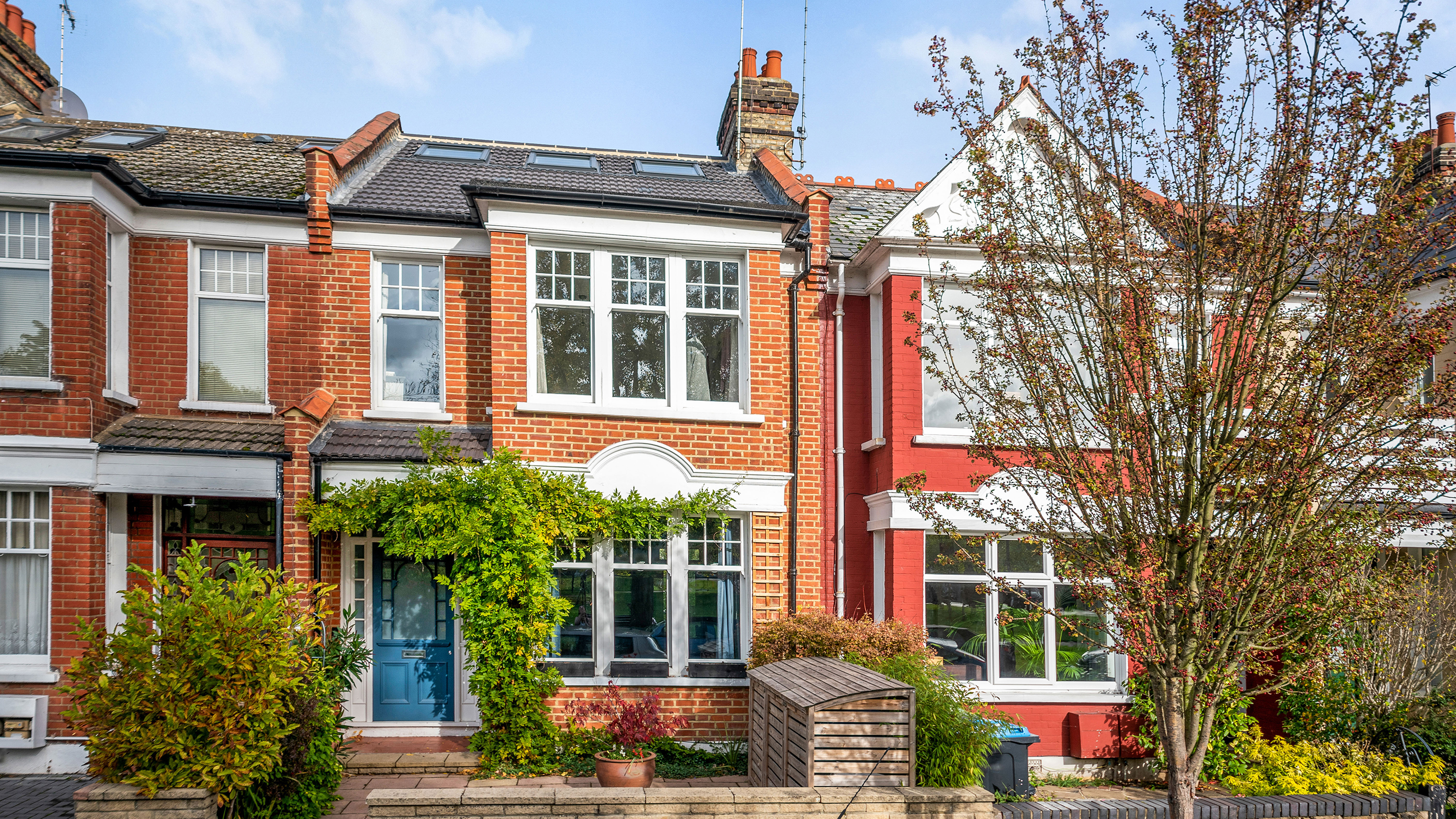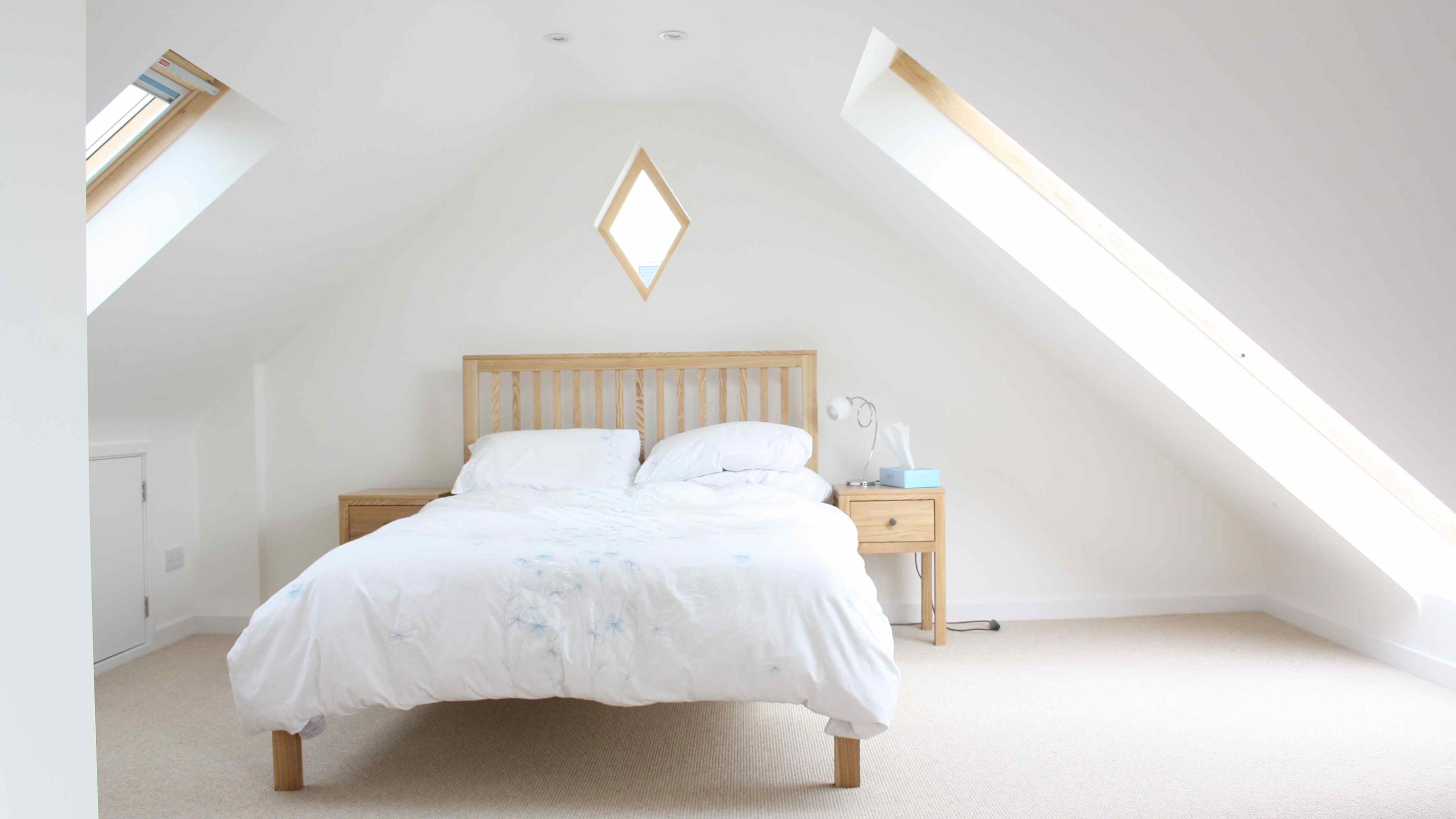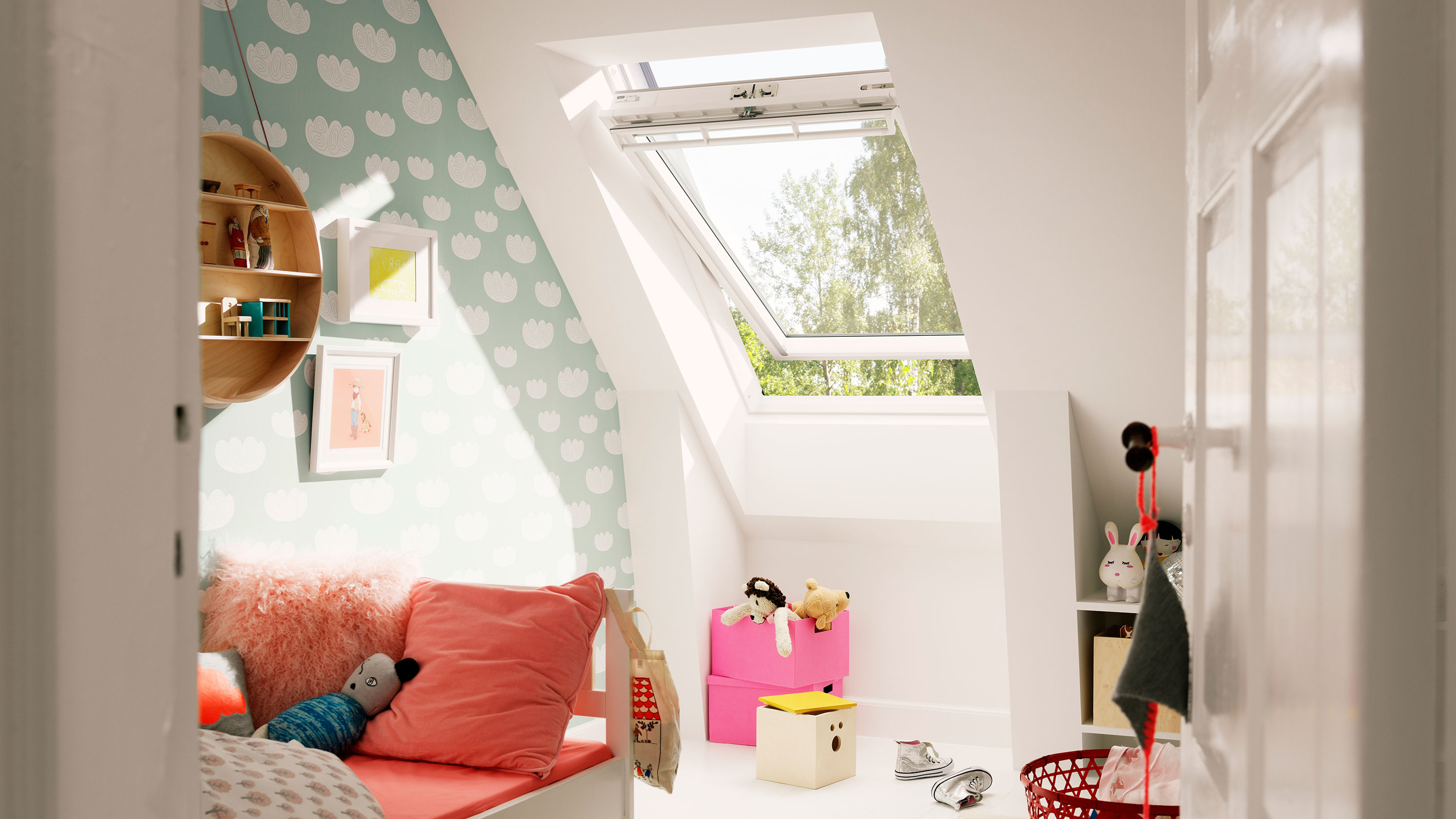What is a Velux loft conversion and is it right for you?
Looking for ways to add space to your home without extending? A Velux loft conversion could be just the ticket. We explain everything you need to know

The term Velux loft conversion is often used to describe any type of loft conversion created by the addition of rooflights. However, Velux is actually the name of a company that manufactures rooflights, so it is important to recognise that there are other types of skylight suitable for use with this style of loft conversion.
Here, we take a closer look at rooflight loft conversions — one of the simplest and most affordable ways to gain an extra room (or two) in your house without having to extend outwards. We’ll explain their pros and cons, how much one is likely to cost you and the amount of space you can expect to gain through carrying out this project.
What is a Velux loft conversion?
Velux loft conversions, also known as rooflight or skylight loft conversions, are one of the simplest and most cost effective types of loft conversion. The structure of the roof remains unchanged, albeit for the addition of a number of rooflights inserted into the existing roof. This turns a gloomy, unventilated space into a bright and airy one, suitable for use as a habitable room.
Of course, the loft will also need to be boarded and decorated. As with the majority of loft conversions, floor reinforcement will also probably be required, with additional new joists being installed in order to comply with the building regulations. A structural engineer will help you specify the correct size and grade for the job.
The new joists will need to span between load-bearing walls. In most cases they are slightly raised above the existing ceiling plasterwork below and will run alongside the existing joists. Above window and door openings in the floors below, thicker timbers are used to bridge the opening, so pressure is not put on the existing opening lintel.

Is my loft suitable for a rooflight loft conversion?
This all depends on your pitch height — you will need a minimum of 2.2m.
“If it is less than this then you can reduce the height of the ceiling of the floor below," says Robert Wood, Managing Director at Simply Loft. “The construction process of a skylight conversion is similar to that of a rear dormer loft conversion, still involving building a suspended floor, insulating the loft space and installing the staircase.”
You will need to measure from the bottom of the ridge timber in the centre of the loft to the top of the ceiling joist. The higher the angle of the roof pitch, the higher the central head height will be.
It isn't just the height in your loft that will determine how suitable your space is for conversion — your roof structure will play a role too.
Most roofs are either 'traditional framed' or 'trussed'. If your house was built before 1960, it is likely to have a traditional framed roof, where the rafters run along its edges. These have a good amount of space and are usually pretty easy to convert.
Trussed roofs, on the other hand, have ‘W’ shaped rafters supporting the roof and the floor structure. While these are more tricky to convert, you need not rule it out completely. In most cases, the 'W' shape of rafters can be replaced with an 'A' shaped frame. Steel beams are usually installed between load-bearing walls for the new floor joists to hang on and the rafters to be supported on. You will need to consult a structural engineer on the best course of action.
How much space can a rooflight loft conversion add?
It is important to realise that a rooflight loft conversion will not give you any additional head height or width within your loft — it will simply turn it into an additional habitable room. Depending on the size of your loft, good loft conversion ideas for these converted spaces tend to be as children’s or guest bedrooms, home offices or hobby rooms.

Do Velux loft conversions require planning permission?
It is unlikely that you will need planning permission for this type of loft conversion as, from the exterior, your house will remain looking the same, save for the addition of a few new rooflights. That said, if you live in a Conservation Area or in a listed building, things will be different and you will probably have to gain planning approval before making any changes.
“You can find out which types of loft conversion your council will allow by visiting their website or getting in touch with them directly,” says Robert Wood. “Equally, take a look around your neighbourhood to see which types of loft conversion have been previously approved.”
If your home is semi-detached or terraced, then you will need to notify your neighbours if your planned work falls under the requirements of the Party Wall Act.
Do I need building regulations approval for a rooflight loft conversion?
Absolutely. Building regulations approval is always needed when carrying out any kind of loft conversion, be it a large mansard loft conversion or a simple Velux loft conversion.
A building control surveyor will need to visit the project at various stages and will, providing all requirements are met, issue a completion certificate upon final inspection.
When it comes to any loft conversion, Velux loft conversions included, you will need to make yourself aware of Parts L, K, B and P of the building regulations. If you are using a loft conversion specialist, builder or architect, they should be up to speed on these and will often submit an application on your behalf.

How much does a rooflight loft conversion cost?
Just as with all loft conversion costs, this will depend on a number of factors, such as where in the country you live, who you get to carry out the work, the rooflights you opt for and whether or not you need to lower the ceilings in the rooms below to make the project viable.
“You can expect a skylight conversion to start at £35k inclusive of VAT,” says Simply Loft's Robert Wood. “This cost covers any amendments to the existing roof and the addition of skylights, as well as the interior refurbishment to a plastered finish. You can do anything you like with your new space, with previous clients of ours turning their new loft space into a home cinema area for their family.”
According to The Rooflight Company, rooflight loft conversions are the cheapest type of loft conversion to carry out — on average they are 25% cheaper than other types of loft conversion.
Get the Homebuilding & Renovating Newsletter
Bring your dream home to life with expert advice, how to guides and design inspiration. Sign up for our newsletter and get two free tickets to a Homebuilding & Renovating Show near you.
Natasha was Homebuilding & Renovating’s Associate Content Editor and was a member of the Homebuilding team for over two decades. In her role on Homebuilding & Renovating she imparted her knowledge on a wide range of renovation topics, from window condensation to renovating bathrooms, to removing walls and adding an extension. She continues to write for Homebuilding on these topics, and more. An experienced journalist and renovation expert, she also writes for a number of other homes titles, including Homes & Gardens and Ideal Homes. Over the years Natasha has renovated and carried out a side extension to a Victorian terrace. She is currently living in the rural Edwardian cottage she renovated and extended on a largely DIY basis, living on site for the duration of the project.

